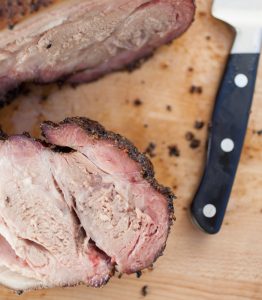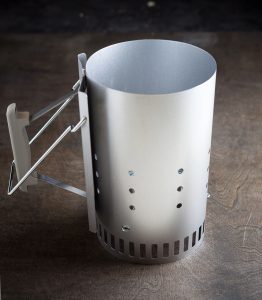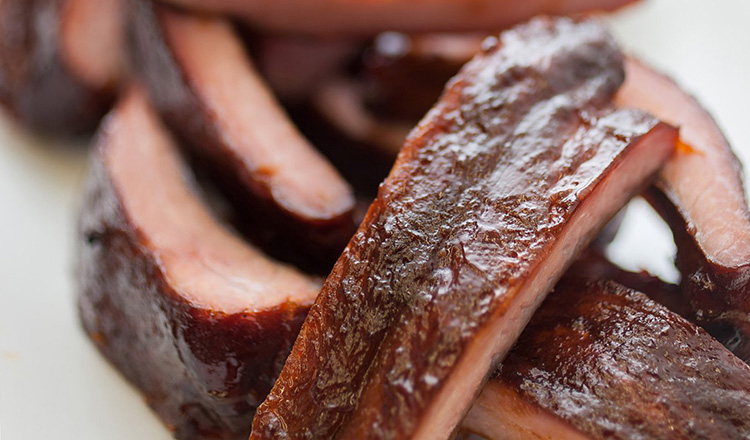If you're curious about barbecue, you're likely to hear certain terms over and over. Here's our guide to basic barbecue buzz words that will help you on your barbecue journey.
The Smoke Ring

One quality indicator in barbecue is the “smoke ring.” This is a pink or red ring around the edge of the finished product. The smoke ring is desirable, and judges in barbecue competitions want to see that the smoke ring present, but it has little to do with smoke.
The smoke ring is a chemical reaction between nitrogen dioxide, produced by the burning wood, and the amino acids in the meat. The nitrogen settles on the surface of the meat and as a result a chemical process between the meat juices and the nitrogen creates the smoke ring.
The wood must be burning at a temperature exceeding 600ºF in order to produce nitrogen dioxide. This is why you will not see a smoke ring on smokers that use sawdust or briquettes. They burn at a lower temperature and so do not produce nitrogen dioxide. When this smoke ring appears on chicken or poultry, it may give the appearance that it isn’t cooked enough—it is. The chicken cooks from the outside in, and this ring will be around the outside of the chicken, which cooks first. It’s a good thing, and one indicator that you made good barbecue.
Bark, Mr. Brown, or Burnt Ends
Bark, also known as Mr. Brown, is the black, crusty, smoky, and intensely flavored outside of a barbecued pork butt or shoulder. When pulling pork, it is important to include some of the bark with each portion to provide some of this intense flavor and texture.
The Plateau
The term “plateau” in the barbecue world refers to a point at which a barbecued or slow-roasted beef brisket or pork butt will hold at a certain temperature for a period of time. This temperature will be in the 160º to 170ºF range. The meat will sit at this temperature, or may even drop a few degrees, for hours.
This is an important point in the cooking process. Collagen is being dissolved and converted to liquid gelatin. This conversion creates extra moisture in the meat, and it requires more time and energy to facilitate the conversion. Be patient; the temperature will increase eventually and will continue on at a steady pace until your desired final temperature is reached, providing you with juicy, tender meat.
Chimney

A chimney, or charcoal starter, is used to heat charcoal before transferring it to the grill. A few sheets of newspaper are placed in the bottom, and the coal is piled on top.
Mop
Like small floor mops, mops for barbecuing have long wooden handles with fabric strips attached to one end. They are used to slather, or mop, sauces onto barbecued and slow-roasted foods. Like pastry brushes, wash mop brushes in the dishwasher or clean them very thoroughly in hot water and sanitizing soap after each use. Soaking them in water treated with a little bleach can also sanitize them and help keep the fabric looking whiter.
Brine
Curing meats, poultry, and fish in a saltand- water solution is known as brining or wet curing. It provides depth in flavor, tenderness, and a moister final product. The base of a brine is salt and water, and sometimes sugar. Kosher salt is preferred because it doesn’t have any additives, such as potassium iodine, dextrose, and calcium silicate, an anti-caking ingredient found in table salt. Frequently, other seasonings are included in a brine as well. Soaking in this basic solution works just fine, but often other ingredients such as fruit juices, herbs, spices, or garlic are also added for flavor. You can tailor the flavor added by a brine by the ingredients and seasonings you use.


